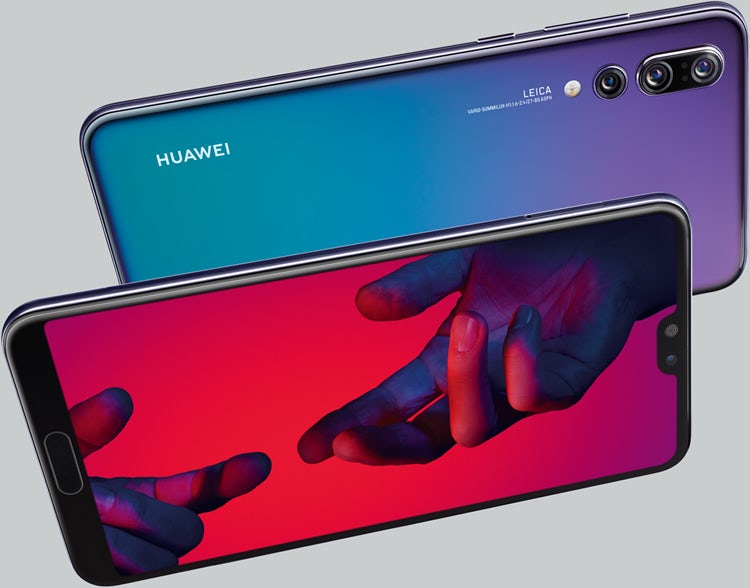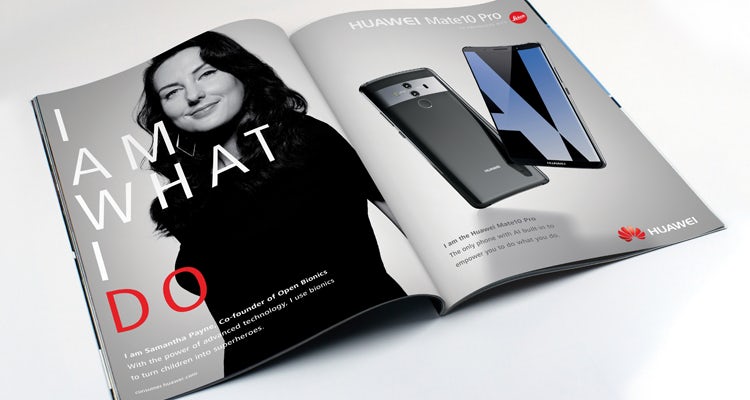How Huawei’s marketing helped it become the number two smartphone brand
The Chinese brand has managed to break the Apple and Samsung hegemony in the smartphone market through a focus on innovation and collaboration, but it faces a big challenge to achieve its goal of being the biggest global player.

Almost exactly a year ago Huawei set its sights on Apple and Samsung at the top of the smartphone market. The challenge seemed enormous. Between them, Apple and Samsung accounted for more than a third (34.7%) of total global sales in the second quarter of 2017, according to Gartner, compared to Huawei’s 9.8%. Yet fast forward a year, and Apple’s share has dropped to 11.9% and Samsung’s to 19.3%, while Huawei is up to 13.3%.
In overtaking Apple to become the second biggest smartphone brand, Huawei has broken a dominance that has lasted for more than seven years; and you have to go back to the second quarter of 2010 to find the last time Apple wasn’t in the top two.
It’s more than likely that Apple will retake the second spot over the next two quarters, with the next set of iPhone launches set for later this month, but that doesn’t mean sales of Huawei smartphones show any signs of slowing. They were up 38.6% year on year in the second quarter, with Gartner crediting its ability to bring “innovative features” to smartphones.
Andrew Garrihy, Huawei’s European CMO, believes the company has a different approach to innovation, looking for ways to bring “real meaning to the consumer experience”. To do that it has focused on two aspects of the smartphone: the camera and battery. The P20 had the first triple lens camera powered by artificial intelligence, developed through a partnership with Leica.
It is partnerships and collaboration that he also sees as key. “Because we’re such a young brand with a different perspective on the world, we really set out to be a brand that makes a meaningful difference in the markets in which we operate. That is because we value things like collective wisdom, partnerships and collaboration, and that is something we’re constantly looking at whether it’s at a product level with Leica or partnering with cultural bodies that make a big difference in the countries where we operate,” he tells Marketing Week.
Building the brand
One of those key relationships has been with its creative agency Doner London. Until recently, Huawei was relatively unknown in the UK, with consumer struggling to pronounce the name let alone have any feelings about what its positioning was or what made it different to other manufacturers. Building the brand has been very important because, as Doner London’s executive creative director Logan Willmont puts it: “Great products count for nought if no one knows who you are.”
That brand building has focused on PR, digital and experiential, rather than major above-the-line campaigns, although it does that as well. For example, it is currently running a photography competition where the entries will be judged by AI; it has already received more than 700,000 entries.
READ MORE: Huawei is taking on the mobile giants by investing in partnerships, not advertising
Garrihy has also focused on building out the team; when he joined it was just four people in an office in Dusseldorf, Germany, but Garrihy moved the Western Europe regional team to London and it now consists of close to 50 people across all aspects of marketing, except product marketing which is still led by the global team in China.
“Right now for the company, marketing is, next to product, the most important area of focus,” explains Garrihy. “If you look at just our growth in Western Europe as a brand, marketing is number one because we have to tell our story and help people discover our brand. It’s widely recognised in Huawei that marketing is critical to our future success.
“We can invest in marketing now because we have the right products. Our product innovation has reached a point where now is the right time to tell our story and make sure people can discover and experience our products.”
Data from YouGov BrandIndex suggests that focus in paying off. In the UK, the Huawei brand is statistically significantly up over the past year across almost all measures – from value to quality to reputation. Awareness has increased by 13.2 points to 62.8 (although that is still some way behind the likes of Nokia, Samsung and Apple that are all in the 90s), while its overall Index score is up 2.6 points to 6.7.
On purchase funnel measures it is performing better still. Consideration is up 5.4 points to 11.4, while purchase intent increased 1.4 points to 2.7. Nevertheless, it is still behind Samsung and Apple, as well as more legacy players such as Sony, LG and even Nokia.
Marketing is number one because we have to tell our story and help people discover our brand. It’s widely recognised in Huawei that marketing is critical to our future success.
Andrew Garrihy, Huawei
The history of the smartphone market has been one of companies rising quickly to the top, and in many instances disappearing just as quickly. The list of casualties is long and growing, from Nokia and BlackBerry to HTC and Motorola. What makes Garrihy think Huawei can maintain its position in the face of big competitors as well as challengers?
“There are a couple of things about us that make us different. First, we have a real passion and commitment for learning. Our culture believes in always challenging the status quo. And because we work more in a collaborative nature and share thinking we are constantly challenging our beliefs,” he claims.
READ MORE: Nokia – It will take us less than 10 years to catch Apple and Samsung
“But probably the most powerful for us is while we are growing rapidly, we’ve come from one of the most competitive markets in the world in China where there are a lot of young, smaller brands we are used to competing with every day, as well as the big established brands. That coupled with our culture puts us in a great position to make sure we don’t become like those other brands.”
That commitment to learning extends to its marketing. Huawei measures and optimises its advertising in real time, tracking metrics including awareness, share of voice, and article sentiment, as well as how its media performs versus competitors and how it impacts consideration and purchase intent. A separate team is responsible for this to ensure “everyone is kept honest”.
“We spend a lot of time reflecting on what we’ve done,” he explains. “We are a learning organisation. We spend a lot of time and money on measurement and analytics and reporting to really understand what is working and what’s not.”
Becoming the global smartphone leader
Hauwei’s ultimate goal is to become the smartphone leader. It isn’t the first brand to attempt that, nor will it be the last, and it faces some steep challenges to get there. The big one is America, where currently the company’s phones are banned because of national security issues, although it appealed to the US Federal Trade Commission to bring the lockout to an end last month.
For Huawei, being Chinese is both an opportunity and a challenge. Go back even five years and ‘made in China’ summoned perceptions of dubious quality and dodgy tech, whereas now Chinese firms led by the likes of Alibaba and Tencent are seen as innovative and forward-thinking.

Its Chinese name also gives it a unique USP, says Garrihy. “[The name] has been a huge benefit for us because it breaks your attention, and it takes time to learn and once you learn it you don’t forget it. And it’s a talking point,” he explains.
But still there are concerns over Chinese tech; the US is not the only country to issue a ban, with Australia just recently ruling that Huawei cannot win contracts to build 5G networks because of a perceived tightening of the Chinese government’s grip on tech companies and the vulnerability of telecoms for use in espionage. South Korea is widely expected to follow suit.
In Europe, Garrihy admits the brand “still has a lot of work to do”. In most European markets it is the number three smartphone manufacturer and faces tough competition “above us and coming below us”. And growing so quickly throws up its own challenges in terms of maintaining a consistent experience.
“We have tremendous momentum and we are growing really quickly but we are under no illusion, we have some very tough competitors and it will come down to our ability to do what we set out to do,” he concludes.
“If we can keep bringing really exciting and meaningful innovation and if as a brand we can tell our story and in so doing make a meaningful impact in the communities in which we operate, I’m convinced [we can become the number one smartphone brand] very soon.”







